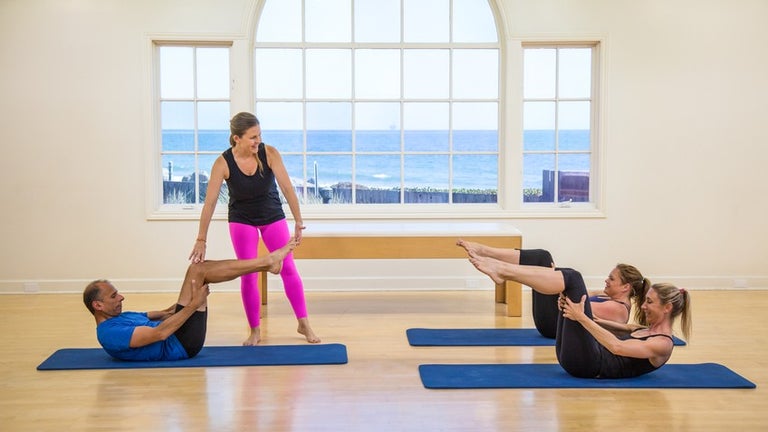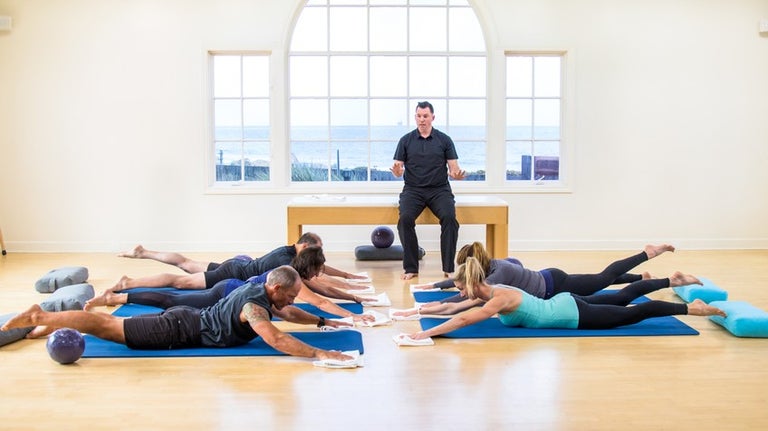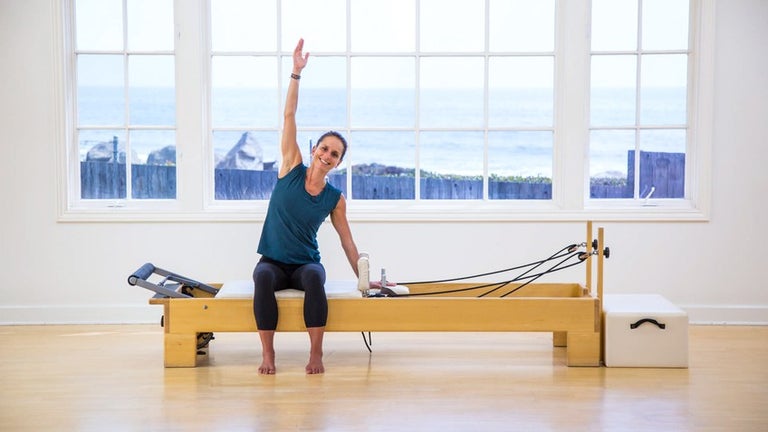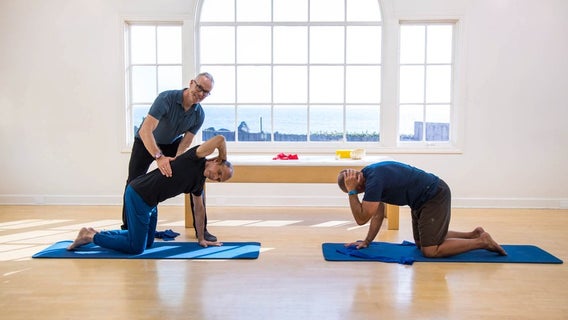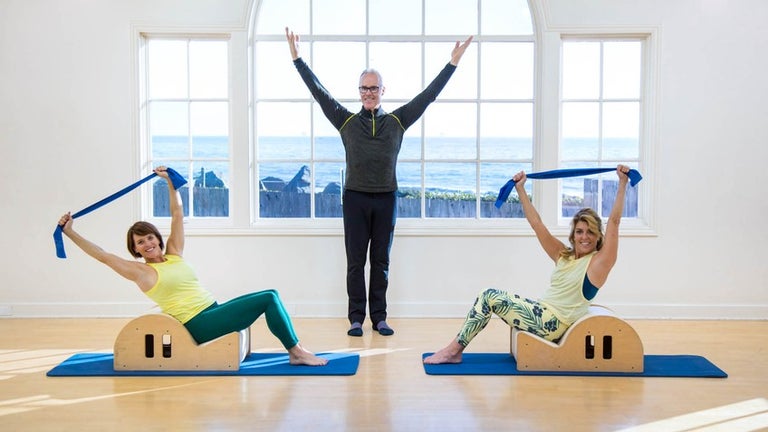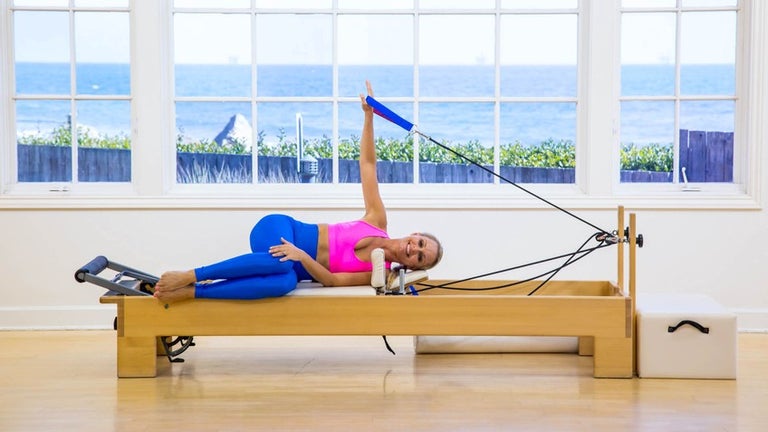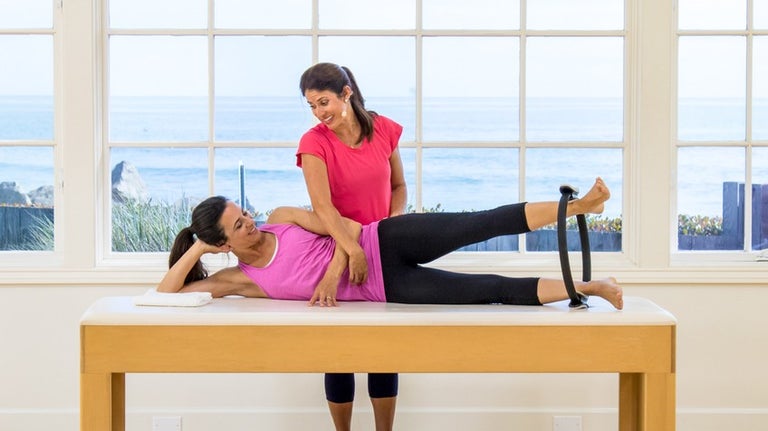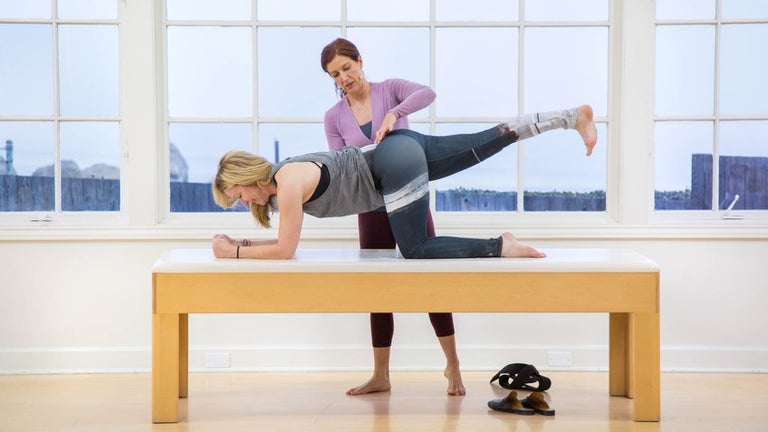Pilates for Back Pain Relief and Prevention
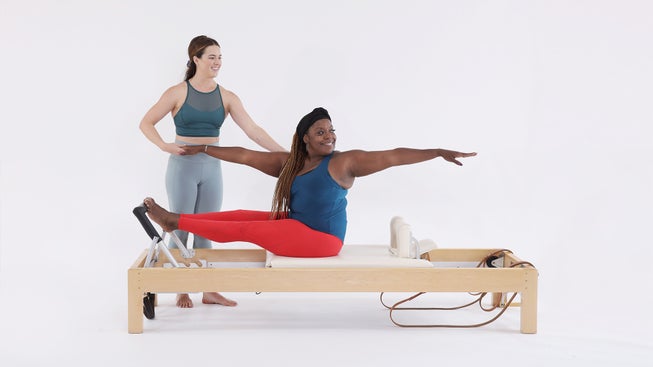
Back Pain and Pilates
If you, like many people, suffer from occasional or chronic back pain, it’s likely that someone has suggested that you look into Pilates for back pain. And why not? Pilates strengthens the core, a corset-like group of muscles that stabilize the trunk and pelvis. Equally important, Pilates teaches good postural habits and healthy movement patterns, helping to reduce the risk of future injuries. When we stand or sit with a tall spine, we create space between the vertebral discs, relieving pressure. Learning how to engage the abdominal muscles and lengthen the spine promotes a stronger, more supple back.
Pilates and Back Pain Prevention
Back pain can cause a cascade of undesirable health effects. Experiencing pain during activities prevents you from doing the things you enjoy, such as gardening, exercise or even playing on the floor with a pet or small child. Pilates instructors often say, “Movement is medicine.” Inactivity, on the other hand, is a vicious cycle. It increases stiffness, which only makes the original situation worse. It’s not surprising that depression and anxiety are associated with back pain—losing one’s zest for daily life because of back pain is depressing! Pilates is often recommended for people with back pain because the exercises that make the back feel better also train your muscles to prevent future flare-ups. Pilates strengthens the muscles of the back as well as those that surround and support the spine, such as the glutes and abdominals. Pilates also encourages healthy movement patterns while walking, sitting, and lifting, and it creates an awareness of the natural curves of the spine (“neutral spine”) that keep the back flexible and strong.
Importance of Good Posture
Good posture doesn’t just make you look better, it can make you feel better. Think of a dancer’s elegant carriage: shoulders back and down, a tall spine, and a slightly lifted chest. A seasoned Pilates instructor will often begin a first session with a new client by observing how the client walks, sits and stands. You can perform the same kind of postural assessment for yourself using a mirror. Pilates reinforces good postural habits that not only give you a more graceful appearance, they also help to reduce strain on your back. When the spine is “long” or “tall,” pressure on the individual spinal discs is relieved. Pulling the abdominals in and up braces the back, reducing the risk of injury while lifting or twisting. Unlike our preconceived notions about what good posture looks like (think of a soldier standing at attention), ideal standing posture maintains the natural curves of the spine. A Pilates practice helps you become aware of these subtle shifts and actions so that what you practice in the studio or at home on your Mat becomes instinctual in real life.
Featured Classes to Prevent Back Pain
Pilates for Back Pain Relief
If you suffer from chronic or occasional bouts of back pain, you already know that relief from back pain can come from an OTC (over-the-counter) pain reliever, a massage or a heating pad. But did you know that it can also come from a Roll-Up or a Spine Stretch? A single Pilates workout can sometimes improve back pain in the same way that a massage can bring relief to tight muscles. For more lasting results and to prevent future flare-ups, try to get in two or three Pilates workouts per week. Even a short series of simple exercises and stretches, done consistently, can create lasting improvement. Give yourself at least four to six weeks to feel the results. Once you begin to practice Pilates, you will automatically begin to implement healthier movement patterns into your daily activities, so if you feel yourself starting to slump, hunch or dump into one hip, you can correct it in the moment. In short, Pilates will help you fix the problem (harmful movement patterns) while also relieving the symptoms (back pain and discomfort).
Tech Posture
Technology is supposed to make all of our lives easier, but it’s not without a cost. Our bodies weren’t designed to wrap themselves around our devices 24/7. The result of being so connected to our tech is often stiff necks, aching backs and tight shoulders. Lots of sitting in front of a keyboard leads to tight hamstring muscles and weak gluteal muscles. This pulls the lumbar spine into an undesirable anterior tilt, creating strain on the lower back muscles. Similarly, hunching over our phones creates a kyphotic (rounded forward) posture that leads to neck and shoulder tension. Although Joe Pilates didn’t live to see an iPhone or attend a Zoom meeting, his namesake method of exercise turns out to be well-suited to the current moment. Pilates emphasizes a “neutral spine” that maintains the natural, healthy curves of the lower, mid and upper back, which acts as an antidote to our modern lifestyles.
Featured Classes to Relieve Back Pain
Pilates for Back Injuries
The familiar expression “use it or lose it” applies to our bodies as well as our brains. If we’re in pain, or even if we’re out of pain but worried about re-injuring ourselves, exercise can be intimidating. Some common forms of exercise just don’t feel good if you have a delicate back or special condition. That’s even more true if you have an acute back injury. If your back is already compromised, you’re right to be cautious about adding exercise to your daily routine. But the current thinking about back pain is that movement is more beneficial than standing still. In fact, it can help you feel better, provided you choose the right kind of exercise for your back injury or condition. Pilates is a good choice for back pain sufferers because it can be endlessly tailored to your individual situation and limitations. It can also help to prevent future back pain by teaching healthier postural and movement patterns.
Modifications, Tips and Precautions
People with a sensitive or injured back should seek some guidance before embarking on a Pilates program, or any exercise program. Ideally, a healthcare provider such as a physical therapist or orthopedist will not only give you the all-clear signal to begin exercising, he or she will also offer you some exercises that are safe for your body. It’s also helpful to know which positions or movements are contraindicated (not recommended) so you can avoid them. In a group class or even in a streaming Pilates video, a well-trained instructor will offer modifications. These are often suggestions like, “keep your knees slightly bent” or “use a smaller range of motion.” Use your inner wisdom and do what feels good to you—and stop if the movement or activity makes you feel worse. Don’t compare yourself to the person next to you or the bodies on the screen. It’s better to start conservatively and keep making progress than having a “weekend warrior” mentality that can lead to injury. If you are mindful and consistent, you can heal your body with movement.
Featured Classes for Back Injuries
Join Our Online Community
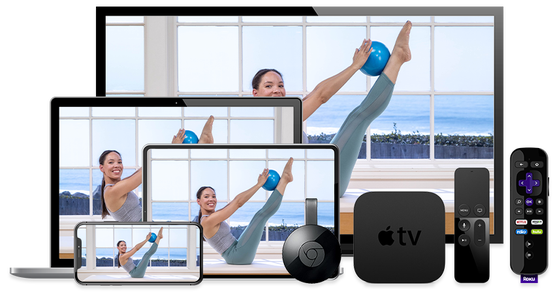
- 15-Day Free Trial
- Unlimited Access to Thousands of Classes
- 95+ Pilates Programs and Challenges
- No Ads
- New Videos Weekly
- Available on All Your Favorite Devices

